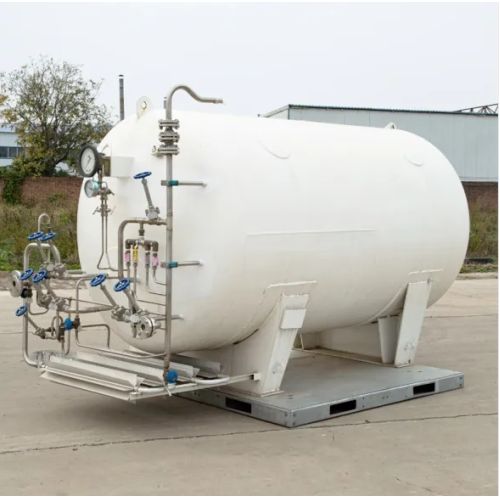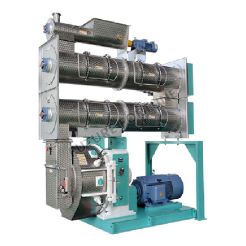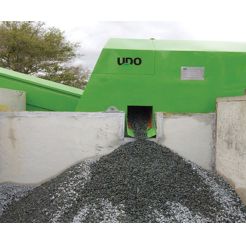Cryogenic Storage Tank
A cryo storage tank is a specialized type of storage vessel designed to store and handle cryogenic fluids, which are substances that exist at extremely low temperatures.
Product Description
We offer 80-1000 liter cryogenic storage tanks, in addition we can customize your own vertical, horizontal and stainless steel cryogenic storage tanks according to your usage. We can provide different cryogenic pressure storage solutions for different gases.
We supply bulk cryogenic storage tanks for the following liquefied gases: liquid nitrogen (LIN), Liquid argon (LAR), liquid oxygen (LOX), liquid hydrogen (LH2), liquefied natural gas (LNG), liquid nitrous oxide (LN2O), Oxygen(O2).
What is cryogenic storage tank?
A cryo storage tank is a specialized type of storage vessel designed to store and handle cryogenic fluids, which are substances that exist at extremely low temperatures. Cryogenic fluids include gases such as liquid nitrogen, liquid oxygen, liquid argon, and liquefied natural gas (LNG), among others.
Cryogenic storage tanks are constructed to maintain the cryogenic fluids at their very low temperatures, typically below -150 degrees Celsius (-238 degrees Fahrenheit). These tanks are designed to withstand the extreme cold and the resulting thermal contraction of the materials used in their construction.
The tanks are usually double-walled with an inner and outer shell, and the space between the walls is typically evacuated to minimize heat transfer. The outer shell provides structural support and insulation, while the inner shell holds the cryogenic fluid. The tanks are often made of materials such as stainless steel or carbon steel, which have good thermal properties and can withstand low temperatures.
Cryogenic storage vessels are used in various industries and applications. They are commonly used in industries such as healthcare, research, pharmaceuticals, and food processing for the storage and transportation of cryogenic gases. These tanks are also vital in the energy sector for storing and distributing LNG, which is used as a fuel source in power generation and transportation.
The storage capacity of cryogenic tanks can vary widely, ranging from a few liters to several hundred thousand liters, depending on the specific application and requirements. Our tanks are typically equipped with safety features such as pressure relief valves and monitoring systems to ensure the safe storage and handling of the cryogenic fluids.
How does cryogenic tank work?
Cryogenic tanks work based on the principles of insulation and pressure control to safely store and handle cryogenic fluids at extremely low temperatures. Here is a general overview of how cryogenic tanks work:
Insulation: Cryogenic tanks are designed with multiple layers of insulation to minimize heat transfer into the tank. The innermost layer, known as the inner vessel or inner shell, holds the cryogenic fluid. It is typically made of materials such as stainless steel or carbon steel that can withstand low temperatures. The outer shell provides structural support and is also insulated. The space between the inner and outer shells is often evacuated to reduce heat transfer by conduction and convection. Additionally, some tanks may have additional insulation materials, such as perlite or foam, to further enhance thermal insulation.
Pressure Control: Cryogenic fluids are stored at very low temperatures, which causes them to be in a liquid state. However, as the temperature rises, these fluids can vaporize and exert pressure inside the tank. To prevent excessive pressure buildup, cryogenic tanks are equipped with pressure relief valves. These valves are designed to open and release excess pressure when it reaches a certain level, ensuring the tank remains within safe operating limits.
Transfer Systems: Cryogenic storage containers are often connected to a transfer system that allows for the withdrawal or addition of cryogenic fluids. Transfer systems typically include pipes, valves, and other components designed to handle the low temperatures and prevent leaks. These systems may also include pumps or vaporizers to facilitate the transfer of the cryogenic fluid.
Monitoring and Safety: Cryogenic storage tanks are equipped with various monitoring and safety systems to ensure their safe operation. This can include pressure gauges, level indicators, temperature sensors, and alarms to provide real-time information about the status of the tank. Additionally, cryogenic tanks are subject to regular inspections and maintenance to ensure their integrity and safety.
Overall, cryogenic tanks work by providing a well-insulated and pressure-controlled environment to store and handle cryogenic fluids. The insulation minimizes heat transfer, while pressure control systems prevent excessive pressure buildup. These tanks are designed with safety features to ensure the proper storage and handling of cryogenic fluids.








